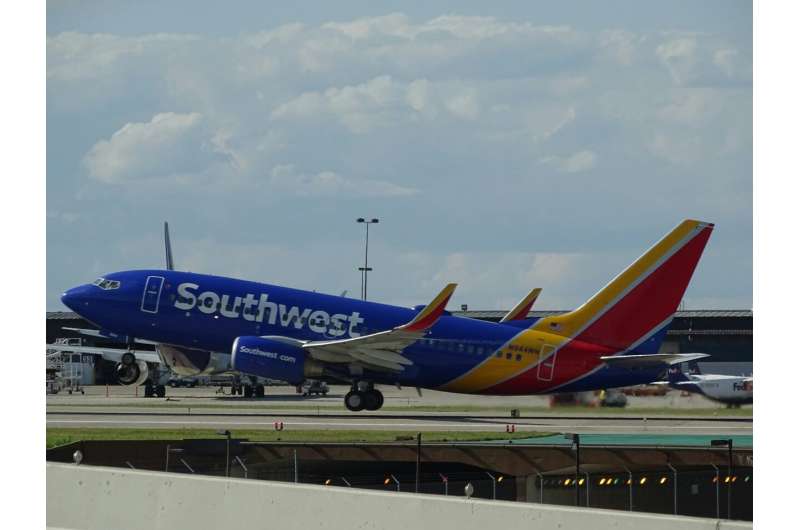This article has been reviewed according to Science X's editorial process and policies. Editors have highlighted the following attributes while ensuring the content's credibility:
fact-checked
trusted source
proofread
Southwest Flight 425 was about 1,000 feet closer to the ground than it should've been—we'll know why soon

A Southwest Airlines flight crew is under investigation after flying dangerously close to the ocean when attempting to land at Tampa International Airport on July 14. The plane dropped to 150 feet above the water—the height of an average water tower—before accelerating to regain altitude. This is the third time Southwest has had a low-altitude incident this year.
Virginia Tech aviation expert Ella Atkins said the fact that the plane diverted safely suggests aircraft controls were functioning properly and weather conditions were a major factor in this incident.
"The data we have showed a steep but not unreasonable descent rate on approach to Tampa. Variation in the descent rate could have been caused by a combination of poor weather such as high winds and thunderstorms, and/or pilot inputs that were unsteady," Atkins said.
However, full black box data isn't available yet and human error can't be ruled out.
"Aircraft are equipped with ground proximity warning systems that enunciate "Pull Up! Pull Up! Pull Up!" to the flight crew when an aircraft gets too close to the ground. In this case, a warning was almost certainly given, but it is not clear whether the crew noticed the dangerously low altitude before or after this warning was issued.
Certainly, the crew were at least in part to blame because they allowed the plane to descend dangerously low. On the other hand, they executed a successful go-around in poor weather without stalling the airplane once they recognized the need to "pull up" and "recover."
Passenger experience
So what did passengers on Southwest Flight 425 feel? Probably nothing significant, according to Atkins. In fact, they probably didn't even notice how close they were to hitting the ground until the crew recognized the problem and corrected it.
"Passengers were flying through bad weather, which causes turbulence, but turbulence is a common experience for seasoned passengers. They most likely heard the throttling up of the engines and sensed the change from descent to sudden climb, but the acceleration rates shown on FlightAware were not extraordinarily high."
As for those with a window seat, the poor weather conditions probably kept them in blissful ignorance. "Given flight through the clouds, it is likely the passengers were not aware of this close call."
Thoughts on previous Southwest incidents
According to Atkins, if all three Southwest incidents were purely pilot error (e.g., lack of altitude awareness, improper altitude profile on approach), the airline needs to do more than send a memo to make sure its two-person cockpit crew maintains vigilance. It has been reported—but not confirmed—that the Southwest low-altitude incident on approach to Kauai was in fact due to an inexperienced first officer descending too fast.
As for the low altitude incident on July 14, "Open questions remain on what commands the crew entered and what autopilot mode sequence was selected. Full black box data will also contain information about other sensor readings that will provide critical information for the investigation.
"Bottom line: Boeing's 737 aircraft series has an excellent safety record overall, so there is no reason to believe this particular incident is in any way related to other "Max" problems. Commercial transport flight is still the safest means of transportation available today."





















